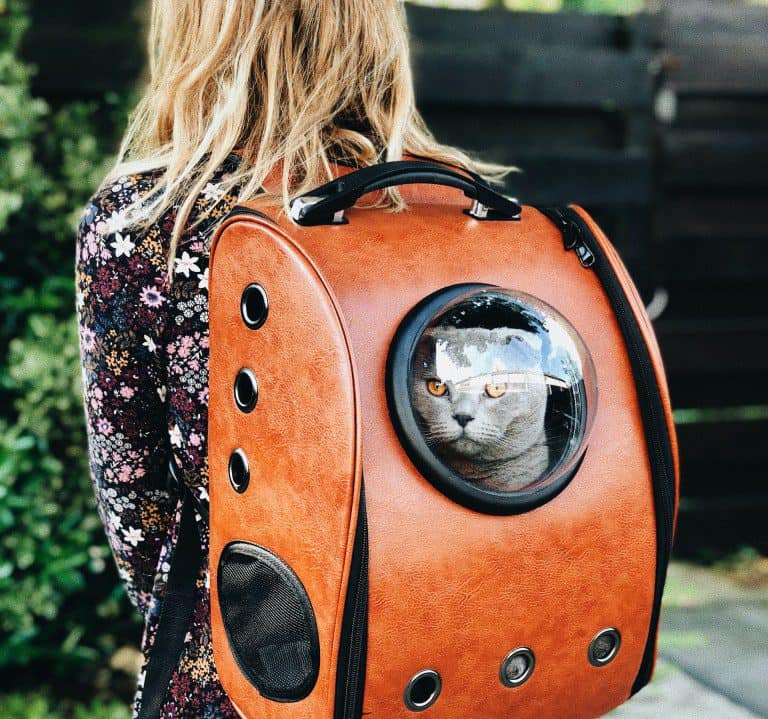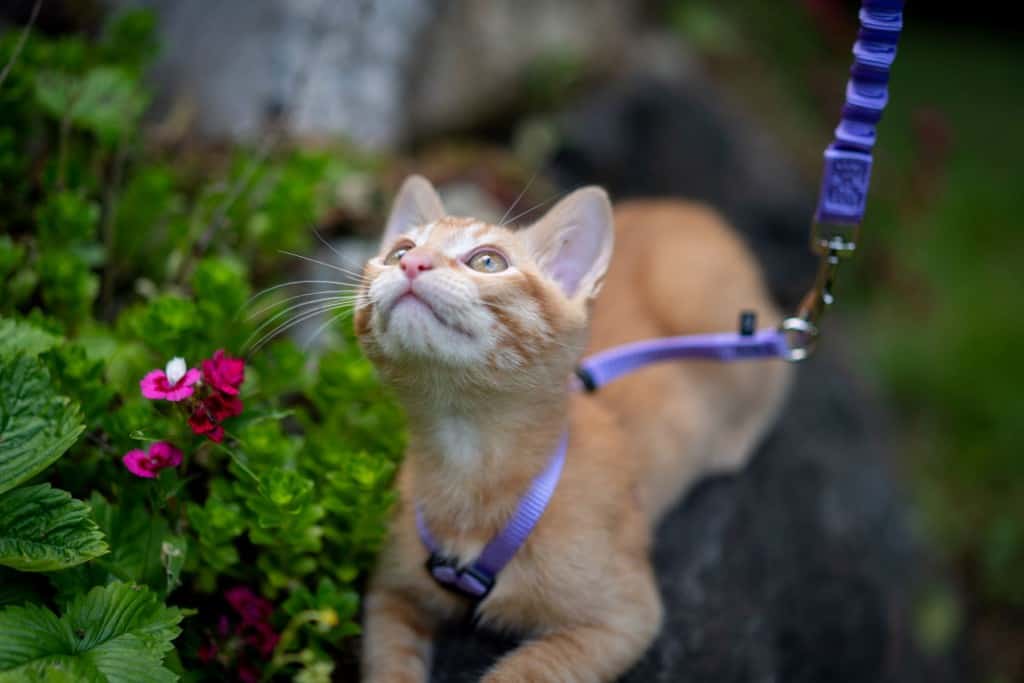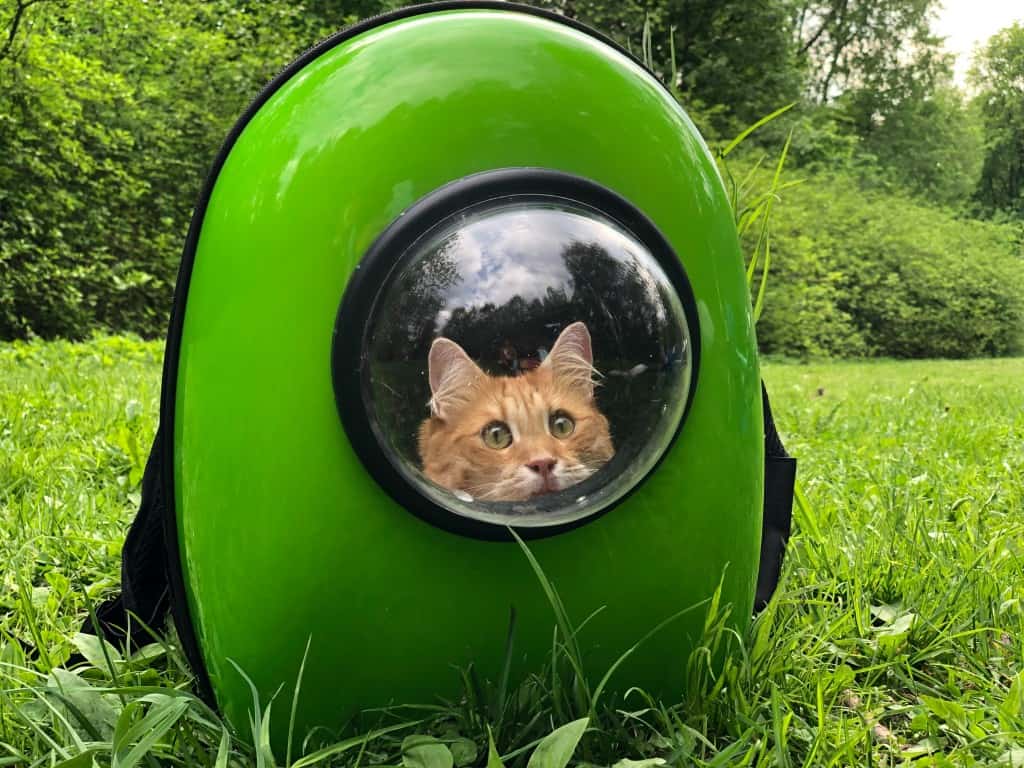Feline like a road trip?
Whether you’re moving to an unfamiliar city or taking your furry friend on holiday, here are some tips to make your travels with your cat as comfortable and safe as possible.
While cats may be lower maintenance and more independent than dogs, they’re still social animals who need your attention and playtime. Also, they need clean litter and fresh food and water. That often means that leaving cats at home for extended periods of time while you’re away isn’t a viable option. So you might prefer to take your cat with you. It can be a daunting experience travelling with your feline friends, but with proper planning and preparation, it can be a smooth and stress-free process.
Plan ahead
Before you embark on your journey, it’s wise to research your destination and make any necessary arrangements. If you’re flying, find out about airline pet policies and requirements. Some airlines may need a health certificate from your veterinarian, while others may restrict the type of carrier you can use. If you’re driving, plan out your route and make sure you have enough food, water, and litter for your cat.
Micro-chipping
If it’s the first time you’ll be travelling with your cat, then you will need to get them micro-chipped. Visit your vet and ask abut this. It’s a fairly quick and painless process. Many countries require cats to be micro chipped for identification purposes so you will need to do this before you travel. If your cat is already chipped, just make sure it is registered and up to date.
Pet passport
As part of the micro-chipping process with your vet, he can also arrange official documentation. The ‘pet passport’ or animal health certificate costs around £110 per animal and allows your cat to travel to other countries. It contains information about your cat’s vaccinations, health, and identification.
Vaccinations
Get your cat vaccinated: Make sure your cat is up-to-date on all necessary vaccinations, including rabies. Some countries may also require additional vaccinations, so be sure to check the requirements of your destination country. Plan ahead for this as some vaccinations require 2 injections before travel and some have to be given a certain amount of time before. Plan this very carefully otherwise your fur-ball will not be allowed to accompany you.
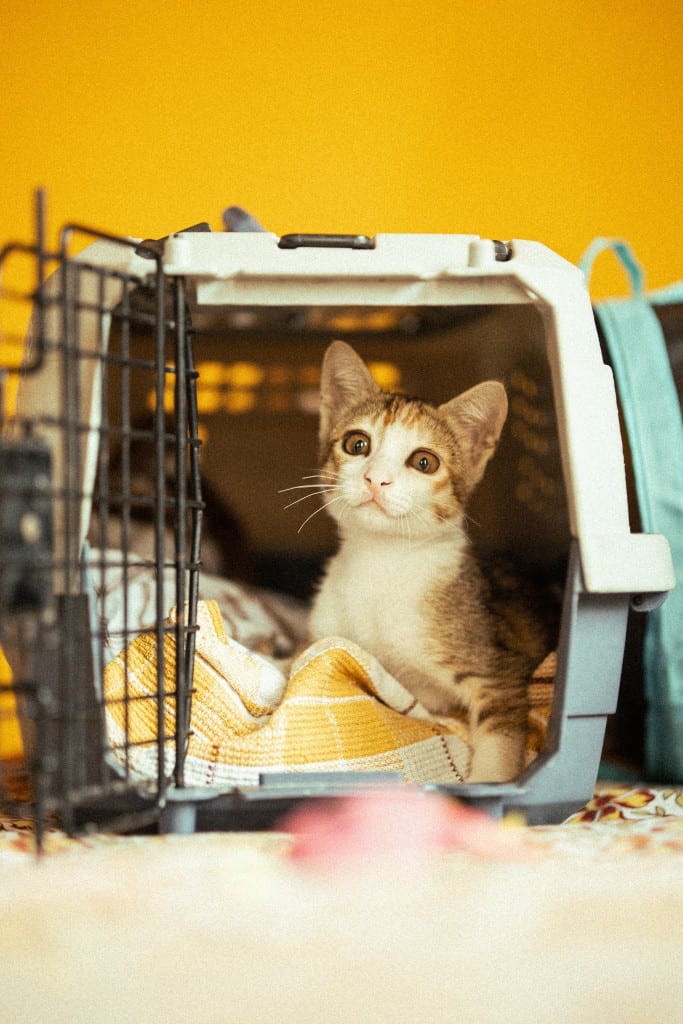
Get your cat used to the carrier
Cats can be anxious and scared when traveling, so it’s critical to get them used to the carrier before the trip. Place the carrier in a familiar place and let your cat explore it on their own terms. You can also try feeding your cat insidethe carrier to associate it with positive experiences.
Pack the essentials
Make sure to pack all the essentials for your cat, including food, water, litter, toys, and any medications they may need. It’s also an excellent idea to bring a familiar blanket or bed to help your cat feel more at ease in new surroundings.
Keep your cat comfortable
When traveling, it’s imperative to keep your cat comfortable and safe. Use a carrier that is the appropriate size for your cat and make sure it is well-ventilated. You can also place a towel or blanket inside the carrier to provide a cosy spot for your cat to rest.
Be mindful of your cat’s needs
Cats have different needs and preferences for travel. Some cats prefer to be left alone, while others want to be held and comforted. Be mindful of your cat’s behaviour and try to accommodate their needs as much as possible.
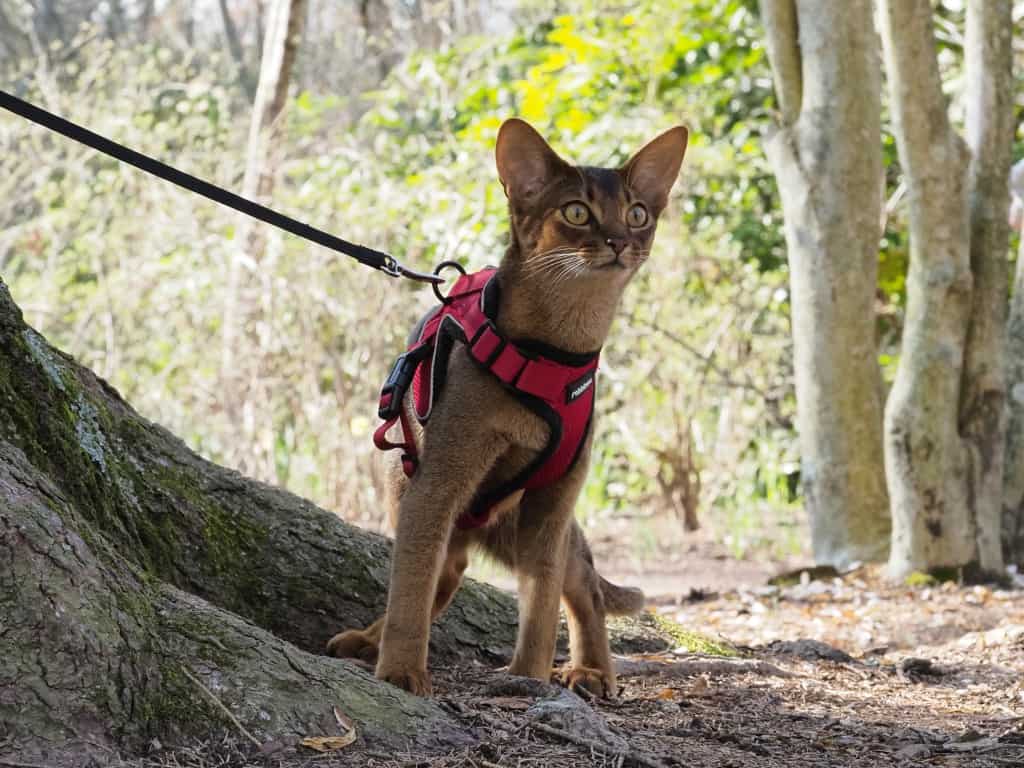
Take breaks
If you’re driving, make sure to take breaks every few hours to give your cat a chance to stretch their legs and use the litter box. If you’re flying, consider booking a direct flight to minimize stress and avoid layovers.
Quarantine
And finally, if travelling by boat or plane, allow for the possibility of quarantine. Some countries may require your cat to be quarantined for a certain period of time upon arrival. Make sure to check the quarantine requirements of your destination country and plan accordingly.
Travelling with a cat can be rewarding, but it requires some extra planning and preparation. By taking the time to prepare and accommodate your cat’s needs, you can ensure a safe and enjoyable journey for both you and your furry friend.
